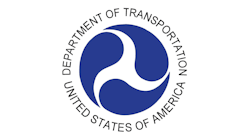DOT Issues Report on Economic Growth Due to Transportation Investments During Recovery Act
The U.S. Department of Transportation released a new report introduced by Vice President Joe Biden, Shovel Worthy: What the Recovery Act Taught Us About Investing in Our Nation’s Infrastructure, to review the impact of the American Recovery and Reinvestment Act (Recovery Act) in advancing economic recovery and job creation after the worst recession since the Great Depression. “Investment in America’s transportation network during the economic crisis was a critical part of the President’s effort to stabilize the economy. This report shows that the investments not only delivered what was expected, it delivered far more,” said Transportation Secretary Anthony Foxx. “The Recovery Act pioneered a new model for investing in game changing projects and transformed the way that the Department delivers projects, setting a new standard for providing transparency and accountability to the American taxpayer.” The Recovery Act invested more than $48 billion in transportation infrastructure during the country’s severe economic crisis to help create jobs, boost economic growth, and reduce a substantial backlog of transportation maintenance projects that would sustain or improve the conditions of roads, bridges, transit facilities, and other infrastructure assets. The new report reviews the metrics for success for that funding in all sectors of the nation’s transportation systems as well as the long-term impact those dollars made on improving the lives of Americans across the country including: “Using modern technology and tracking tools that focused on transparency and accountability of taxpayer dollars, the majority of Recovery Act funds were structured to immediately prioritize ‘shovel ready’ projects such as fixing roads and bridges, which helped to clear a long backlog of unfinished projects,” said Shoshana M. Lew, chief financial officer and assistant secretary for budget and programs. “Beyond these measurable and lasting benefits, the Recovery Act is a model that will continue to inform and influence future investments in our transportation system.” For more information about the report, please visit https://www.transportation.gov/mission/budget/arra-final-report.



